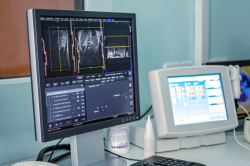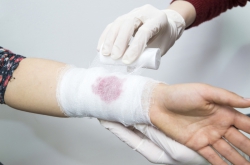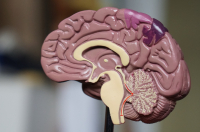Symptoms and treatment
Migraine is a chronic condition involving periodic bouts of intense, often one-sided, head pain that can last from four hours to three days and be accompanied by nausea, vomiting, and intolerance to odors, lights, and sounds. Migraine sufferers are left nearly incapacitated during these attacks, as any actions result in worse pain.
The condition is commonly treated with antimigraine drugs that serve different purposes. The triptans, such as sumatriptan, lasmiditan, and dihydroergotamine, relieve headaches, whereas topiramate, atogepant, and erenumab prevent migraines. The medications help with the pain but don't address the main cause – so far, no cure for migraine has been invented.
Lab experiments
Scientists around the world are looking for new ways to treat migraines. To find a cure, they experimentally induce the condition in laboratory animals, often using nitroglycerin – a type of nitrate that is extensively used to treat arteriosclerotic heart disease. While nitroglycerin is used to dilate blood vessels and reduce myocardial oxygen consumption, it can also trigger headache episodes in migraine sufferers. During experiments, researchers apply nitroglycerin to artificially induce the symptoms of migraines in animals to test potential new medicines and therapies.
As noted by Maxim Volynsky, an associate professor at ITMO’s School of Physics and Engineering, scientists have not reached a consensus on how nitroglycerin affects intracranial vessels as a migraine trigger, despite it being vital to the further study of migraine causes and promising treatment strategies.
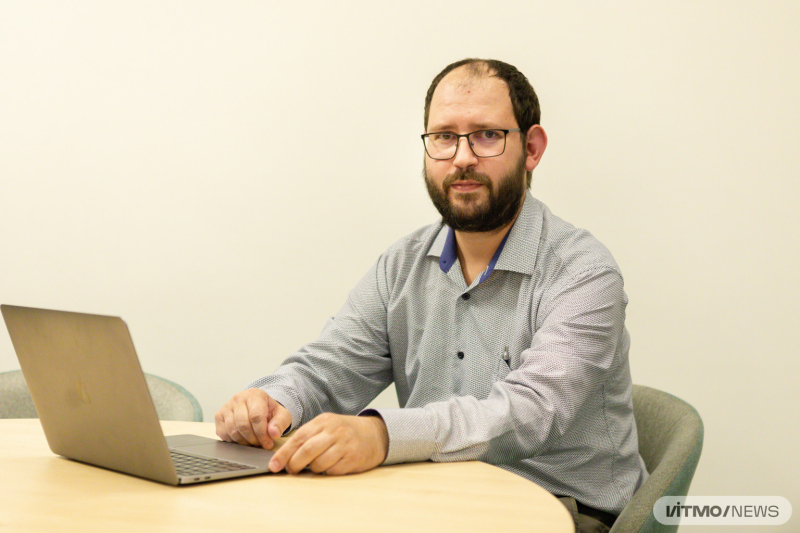
Maxim Volynsky. Photo by Dmitry Grigoryev / ITMO.NEWS
The study
A research team from ITMO’s School of Physics and Engineering, Pavlov First St. Petersburg State Medical University, and the Institute for Automation and Control Processes (Far Eastern Branch of the Russian Academy of Sciences) ran a series of experiments to investigate the effects of nitroglycerin on blood vessels. They took 25 rats and divided them into two groups, one of which (12 rats, a treatment group) received an intravenous infusion of sumatriptan in two doses, whilst another (13 rats, a control group) – a saline solution that has no sufficient effect on the body. Within 15 minutes, the animals in both groups were injected intraperitoneally with nitroglycerin.
To assess the effect of nitroglycerin on blood vessels, the researchers monitored the animals for changes in the concentration of carbon dioxide in the exhaled air, blood pressure, and heart rate before, during, and within two and a half hours after the nitroglycerin injection.They applied imaging photoplethysmography to evaluate the parameters of cerebral brain flows (blood circulation and vascular tone) and examine intracranial vascular responses.
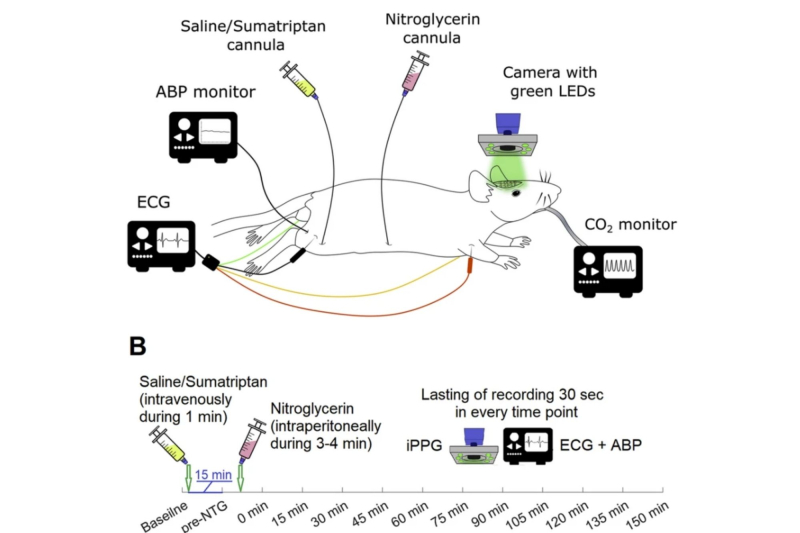
А schematic of the experimental setup for monitoring of nitroglycerin responses in intracranial vessels. Credit: Scientific Reports
Research results
The team’s findings were unexpected: the study showed that nitroglycerin has a dual impact on animals. In the control group, seven rats exhibited a typical reaction, namely, dilated vessels, and six rats showed the opposite. However, the most unexpected finding is that sumatriptan did not seem to reverse the nitroglycerin-induced widening of blood vessels in any of the animals from the treatment group, which contradicts common medical knowledge.
“The study produced valuable information on the effect of nitrates and triptans on brain vessels, the interactions between these medications, as well as the mechanism of the triptan treatment against migraines. The data we obtained is also crucial for studying the triptan treatment of migraine patients with arteriosclerotic heart disease and those receiving nitrate therapy,” notes Maxim Volynsky, an author of the paper and associate professor at ITMO’s School of Physics and Engineering.
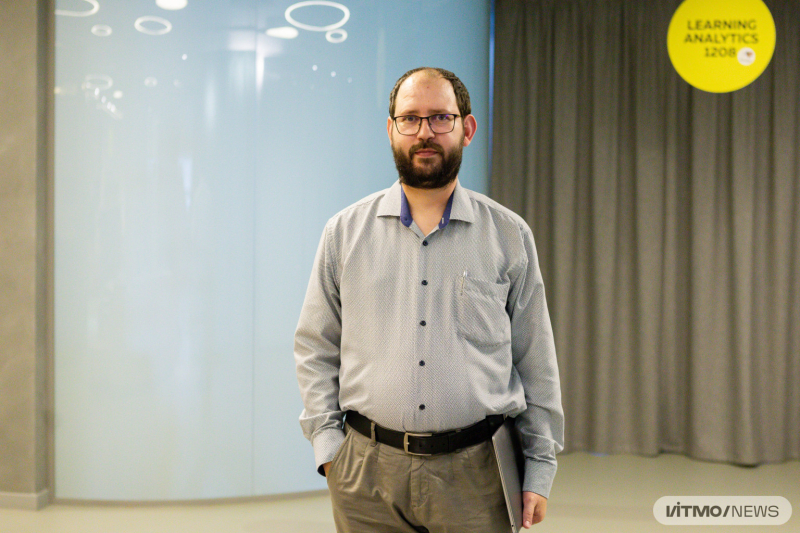
Maxim Volynsky. Photo by Dmitry Grigoryev / ITMO.NEWS
Prospects
The team will continue to study the effects of pharmaceutical and non-pharmaceutical interventions on cerebral hemodynamics. They plan to rely on animal models and other materials to obtain and analyze biological data.
The study is supported by the Russian Science Foundation.
Reference: Alexey Sokolov, Maxim Volynsky, Anastasiia Potapenko, Polina Iurkova, Valeriy Zaytsev, Ervin Nippolainen & Alexei Kamshilin. Duality in response of intracranial vessels to nitroglycerin revealed in rats by imaging photoplethysmography (Scientific Reports, 2023).



